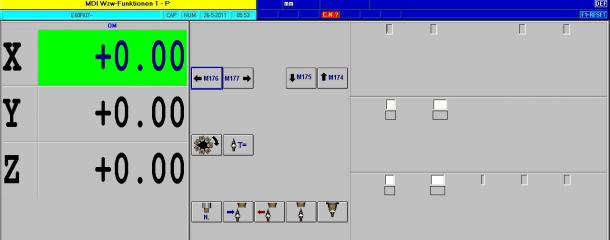Scm Xilog 3
The module integrated in the Xilog Maestro suite is designed to program three dimensional. Borland c builder 6 download portable windows. Search for jobs related to Scm xilog 3 or hire on the world's largest freelancing marketplace with 15m+ jobs. It's free to sign up and bid on jobs.
Xilog3 is a programming system of the Group. It is not a directly newly-developed machine but an processed variation of the software, the term, Zilog 3 has been used since 1999. It was used, inter alia, in the following (series): • • Features • User interface adjustable in the native language of the user • Graphical programming tools such as circle segments, ellipses, etc. • Mirror function for variable-programming • Parameter programming • Workpiece graphics display • Graphic display of the tool head • Fault diagnosis of programming and machine errors • Tool radius and length correction • Shifting of the reference point in the program • Display of suction cup positions • Work lists for automatic operation • Multitasking, i.e. Programming, while the machine works • Supports serially up to 5 languages Interfaces •, ASCII, PGM, ISO Hardware • The WOP program runs under the operating system of Microsoft Windows.
This PC is connected to the SPS (PLC) connected. Optionally used as NUM or KVARA.
Hi, I am in the process of 'inheriting' a SCM tech machining center for wood. The previous owner is quite set in his ways and only knows one method for each thing he does with the machine. Basically, we either write programs from scratch using xilog plus, or create text/vector stuff in autocad, save as R12 DXF, open in Xilog, save as PGM and then open at the machine. This works well enough, except when making more complex things, as described in this post: My question is whether it is true that the machine will only understand PGM files created by xilog, or if there are any alternatives that you guys might recommend to simplify processes and/or get the most out of the machine. I now need to get it to cut out a pig shape (attached), and it is proving near impossible!
Thanks a lot for any help:-) Attached • (35.1 KB, 105 views) •. Try this.dxf Here's what I did: Open in AutoCAD.
Select and EXPLODE Use a spline to pline lisp to covert splines to polylines. Use PEDIT to close the polylines. It should work for you. I use a Morbidelli, which also uses Xilog and.pgm files.

However, we create all our code in AlphaCAM, and I only use Xilog for editing g-code. With our Morbidelli, the.pgm files are binary, and can't be created without a special post for AlphaCAM.

However, we have a utility that can convert standard text g-code files into binary.pgm files. I think it's call Xiso or something similar. If you have this utility, you can use any CAM program to create your g-code, and then use the utility to convert them to binary.pgm files.
You most likely will need a modified post to include the proper header and correct formatting, but most CAM programs should have this capability. Attached • (427.3 KB, 92 views) •. If you're using Xilog Plus you can save any text file with a.xxl file extension. As long as the code is formatted correctly you can then save as.pgm and it will be converted.
You just need a post processor for whatever cam program you are using. Alphacam works well with xilog but it's a bit pricey. Vectric software has a post, is relatively cheap and seems to fit what you're doing well. The only catch is it doesn't use cutter compensation; not a big deal in my opinion. It should save you from a lot of headaches. Importing dxf is not much fun on these machines if I recall correctly; maybe the technology has improved though. Xilog is fine for simple shapes, or for writing parametric programs for things like kitchen carcases that might vary in size or detailing.